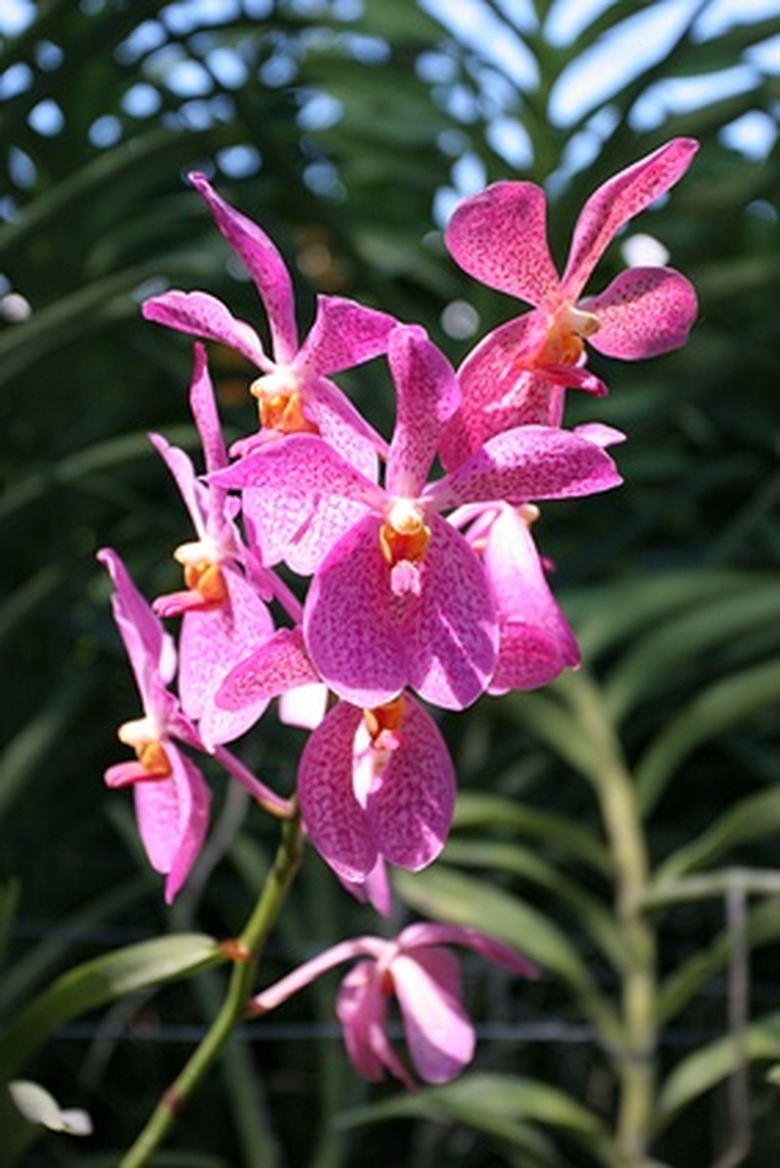Thai Flower Names
Thailand's tropical, hot and humid climate is conducive to a wide range of plants and flowers. Orchid growing and exporting is a major industry of this Southeast Asian nation. In 1858, the country recorded the creation of its first hybrid orchid, by an English botanist. Previously, orchids had grown only in the wild.
Thailand's tropical, hot and humid climate is conducive to a wide range of plants and flowers. Orchid growing and exporting is a major industry of this Southeast Asian nation. In 1858, the country recorded the creation of its first hybrid orchid, by an English botanist. Previously, orchids had grown only in the wild.
Orchids
In Thai, orchids are "kluai mai." Thai literature, including works like the epic "Inao" by King Rama II (1809 to 1824) mentions orchids. Members of Thai royalty were instrumental in popularizing and classifying them. Prince Woraphinit of Nakhon Sawan authored the first Thai publication about orchids, called "Tamra Kluai Mai," published in 1917. It was an official classification of Thai orchids by set international standards. The founding of the Orchid Association of Thailand in 1957 was to promote orchid appreciation and to establish orchids as a source of income. In 1968, Thailand began to export cut orchid flowers. Today, Thailand is a leader in the world orchid market. Among the many examples of the flower is Dendrobium heterocarpum Lindl, or "Uang Si Tan" in Thai. It grows in forested areas at elevations of over 3,000 feet in most parts of the country except the central region. It usually flowers between December and March.
- Thailand's tropical, hot and humid climate is conducive to a wide range of plants and flowers.
- The founding of the Orchid Association of Thailand in 1957 was to promote orchid appreciation and to establish orchids as a source of income.
Golden Shower Tree
The golden shower tree (Cassia fistula) exhibits the national flower of Thailand, called "ratchaphruek" in Thai. It is an evergreen with clusters of bright yellow blooms, each about 3 inches across. The tree reaches heights of between 30 and 40 feet, and is popular as an ornamental. It features the color of Monday, yellow, which honors His Majesty, King Bhumibol Adulyadej, who was born on a Monday. The golden shower prefers full sun and well-drained soil. It is drought- and salt-tolerant, but cannot tolerate frost.
Parrot Flower
It is easy to see why Impatiens psittacina is called the parrot flower, or "Dork nok khaew" in Thai. The delicate, 2-inch bloom of this tropical flower takes the shape of a parrot in flight, in colors of lilac, reddish purple and white. The parrot flower, which grows to a height of about 6 feet, is a rare and protected species found in northern Thailand. It flowers in October and November and requires moist and humid conditions. In 1901, British botanist Joseph Dalton Hooker (1817 to 1911) described the parrot flower as looking like a "cockatoo suspended by a string from its shoulders," as quoted in the "Curtis Botanical Journal Magazine." Hooker named the plant, selecting the epithet "Psittacina," meaning "parrot-like." A British officer, A.H. Hildebrand, discovered it. Thailand prohibits exports of the parrot flower and its seeds.
- The golden shower tree (Cassia fistula) exhibits the national flower of Thailand, called "ratchaphruek" in Thai.
- It is easy to see why Impatiens psittacina is called the parrot flower, or "Dork nok khaew" in Thai.
